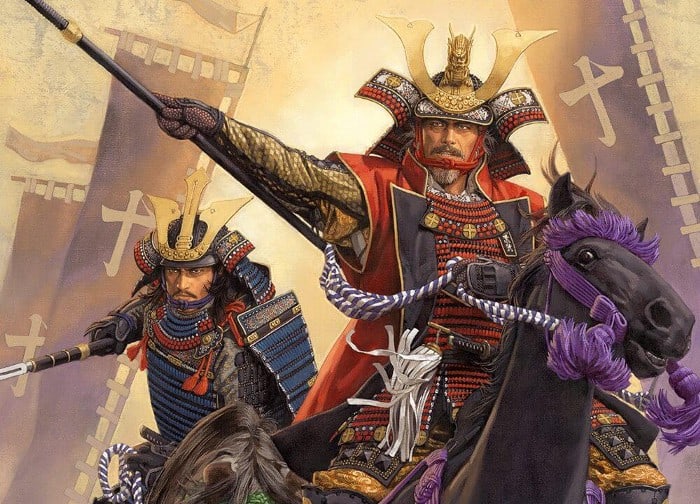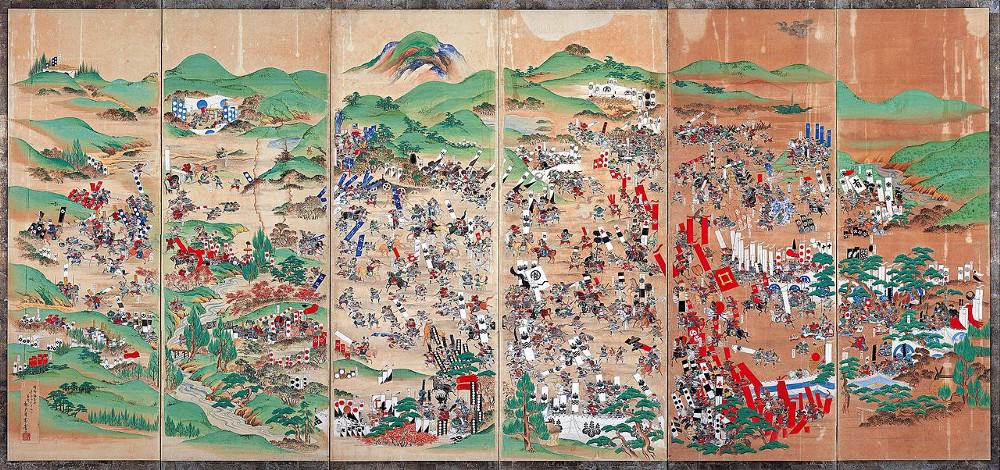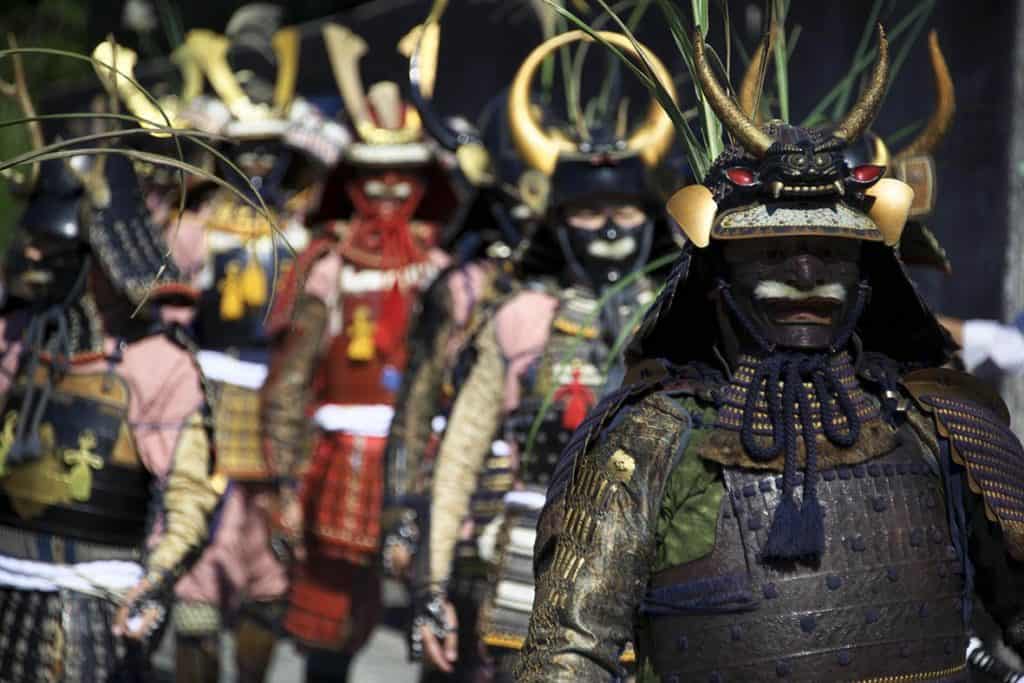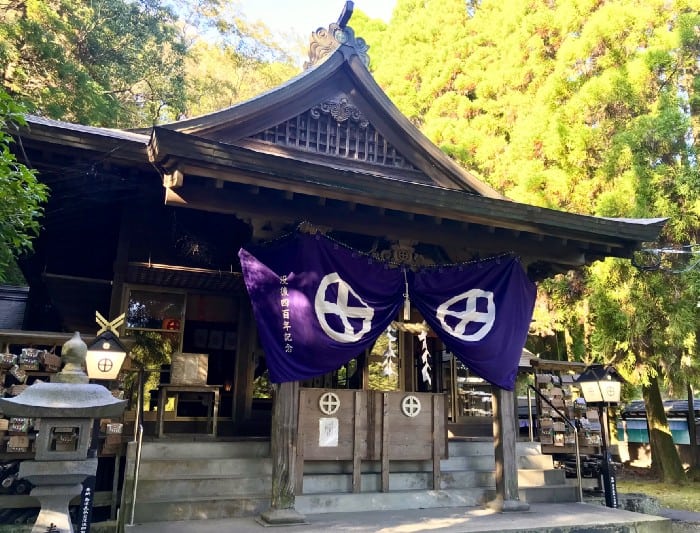The “Demon Shimadzu” and the pilgrimage held in his honor
Shimadzu Yoshihiro’s escape from the epic Battle of Sekigahara is legendary. But before we can tell that story, we first need to set the stage.
Background
The late 15th century through the end of the 16th century is aptly called the Warring States Period. During those years, Japan was rocked by continuous strife, bloodshed, and power struggles between rival warlords.
In the mid-16th century, Oda Nobunaga, an exceptionally powerful lord, arose in Owari (now Aichi Prefecture). He conquered one great warlord after another, and over a period of 20 years succeeded in uniting much of the country — until he was betrayed by one of his own and driven to commit seppuku, the samurai’s ritual suicide.
One of Nobunaga’s generals, Toyotomi Hideyoshi, consolidated power and continued the work of unification by force. His ambitions got the better of him, though, when he set off to conquer Korea and the Chinese Ming Dynasty. In the midst of his defeats in Korea, his life was cut short by illness.
Before his death, Hideyoshi set up a council of five elders to govern Japan until his 5-year-old son was fit to rule. One of those men was Tokugawa Ieyasu, a highly intelligent and devious warlord to whom Hideyoshi had granted the backwater castle town of Edo (now Tokyo). He would eventually go on to unite the entire country under his iron-fisted rule, establishing the Tokugawa shogunate of the Edo era.
The “Demon Shimadzu”

While Hideyoshi was unifying central and western Honshu, another powerful lord had arisen on the southern island of Kyushu, Shimadzu Yoshihiro, who was well on his way to uniting all of Kyushu. His goal was never reached, as Toyotomi Hideyoshi and his allies answered an appeal for help from one of the Kyushu lords and swarmed onto the island, eventually surrounding the Shimadzu castle in Satsuma (now Kagoshima Prefecture).
Yoshihiro surrendered to Hideyoshi, and soon joined him in his attempted conquest of Korea, earning himself the moniker, “Demon Shimadzu” for his fearlessness and fierceness on the battlefield.
Hideyoshi’s death during his attempted conquest of Korea created a power struggle in Japan that was soon to be settled on the battlefield at the strategic pass of Sekigahara, in Mino (now Gifu Prefecture).
The Battle of Sekigahara

On the morning of September 15, 1600, upwards of 160,000 samurai were camped on the fields of Sekigahara and its surrounding hills ready to give their lives in battle for their lords.
The Eastern army, led by the powerful Tokugawa Ieyasu, was facing off with the Western army, led by Ishida Mitsunari, who was defending the Toyotomi family’s claim to leadership.
Shimadzu Yoshihiro had joined the Western army, but due to the quelling of an uprising in his home province, had only 1,500 samurai under his command, a mere fraction of the number who followed other great lords.
In spite of his small numbers, Yoshihiro and his men took up their position in the center of the battlefield. When the fog lifted at 8 AM, the battle commenced. Yoshihiro sat motionless on his horse, watching and waiting. Before noon, due to pre-battle persuasion and promises of wealth from Ieyasu, several Western lords changed allegiance and started fighting on the side of the Eastern army. This quickly turned the tide of battle, and it was soon obvious that all was lost for the Western forces.
Surrounded on all sides by the enemy, Yoshihiro realized that there was nothing left but to escape. Surrender would have meant certain death for both himself and his 1,500 noble warriors.
Determining where the Eastern army was at its strongest, Yoshihiro chose that spot to break through Ieyasu’s 30,000 samurai to escape back to Satsuma. Although wildly outnumbered, the surprise and ferocity of his charge so stunned the enemy that they initially fell aside. The fighting raged fiercely, yet Yoshihiro and many of his men made it out of the battle, mortally wounding one of Ieyasu’s key allies on their way.
The Long Road Home
It was not an easy trip back to Satsuma. After escaping through the thick of battle, Yoshihiro and his men were completely without supplies and faced with a journey of over 1,000 kilometers that was fraught with perils. Hunted and harassed by Ieyasu loyalists, they were briefly hidden by allies, ruthlessly attacked while at sea, and finally were faced with climbing the steep volcanic mountains of Kyushu, their home island, without food or water. After 19 long days, Yoshihiro and a mere 80 of his former 1,500 men arrived home.
Yoshihiro passed the leadership of Satsuma Province to his son and retired to the volcanic island of Sakurajima. A devout Buddhist, he spent his remaining years teaching the younger generation. He died at age 84.
But he was not forgotten.
The Myōenji Pilgrimage

Before his death, Yoshihiro commissioned a wooden statue to be carved in his likeness as the receptacle for his spirit. He had it placed at his family’s temple in the Satsuma countryside, Myōenji.
To remember Yoshihiro’s valor and that of his samurai, a yearly pilgrimage to the Shimadzu family’s temple was begun. Samurai, both young and old, would set off from downtown Kagoshima City to walk the 40 kilometers round trip to Myōenji in one night. People of all classes would crowd the sides of the road, jostling to watch this magnificent procession.
This pilgrimage was considered an important part of a Satsuma samurai’s education, imbuing in the youth the importance of physical and mental stamina, so that they, too, might have the strength to climb steep mountains and endure the brutal difficulties over which Yoshihiro triumphed in his heroic escape from the Battle of Sekigahara.
Temple Destruction
For most of the first two centuries following Yoshihiro’s death, the pilgrimage was a Buddhist event, and both Buddhist temples and Shinto shrines occupied the grounds of Myōenji. This exemplified the harmony of Buddhism and Shinto that had existed in Japan from the advent of Buddhism in the 6th century.
In 1869, Emperor Meiji, as the direct descendent of the sun goddess, Amaterasu, was recognized for his divinity, and Shinto was made the national religion. The Meiji government ruled that Buddhism and Shintoism must be separated.
This led to the utter destruction of Buddhist temples, statues, and relics, which was carried out with utmost zeal in Satsuma, whose leadership had been instrumental in restoring the power of the emperor through the Meiji Restoration of 1868. The Myōenji Temple was torn down, its Buddhist graveyard desecrated and tombstones scattered, and its statuary defaced and tossed away. A few statues were saved, though, one of which was the statue of Yoshihiro who had been deified in the years following his death.
In 1871, the Tokushige Shinto Shrine was built to replace the Myōenji Temple and Yoshihiro became its object of worship. It became the new mecca of the Myōenji pilgrimage.

The Samurai Spirit Lives On
The Myōenji pilgrimage continues to be held each October. Children and adults, many dressed in samurai armor, walk from Kagoshima City to the Tokushige Shrine, where the 400 year old wooden statue of Yoshihiro still stands, then on to the reconstructed Myōenji Temple.
To this day, the annual pilgrimage is considered an important part of education in Kagoshima, with the emphasis on imparting to the younger generation a sense of the hardships, heroism, and valor of the past.

If you have questions about Japan or suggestions for articles, please add them in the comments. For more photos and information on Japan, follow me on instagram at: https://www.instagram.com/more_than_tokyo/




